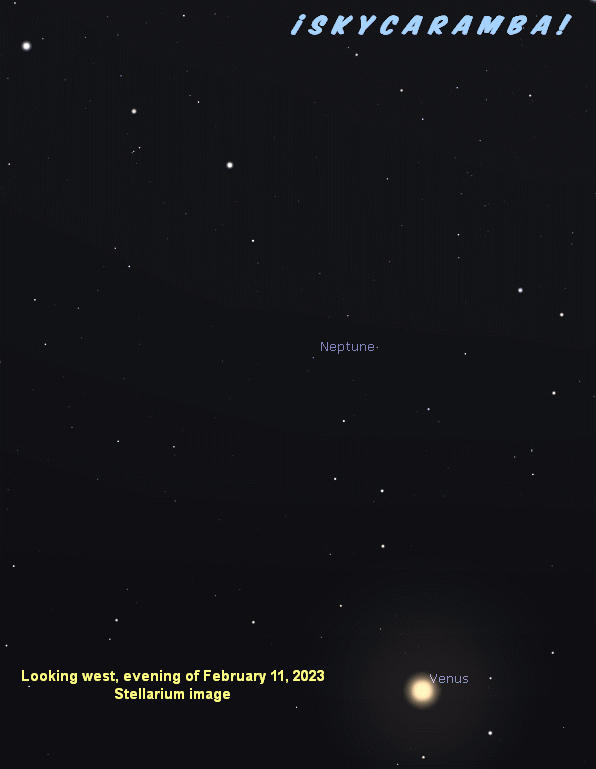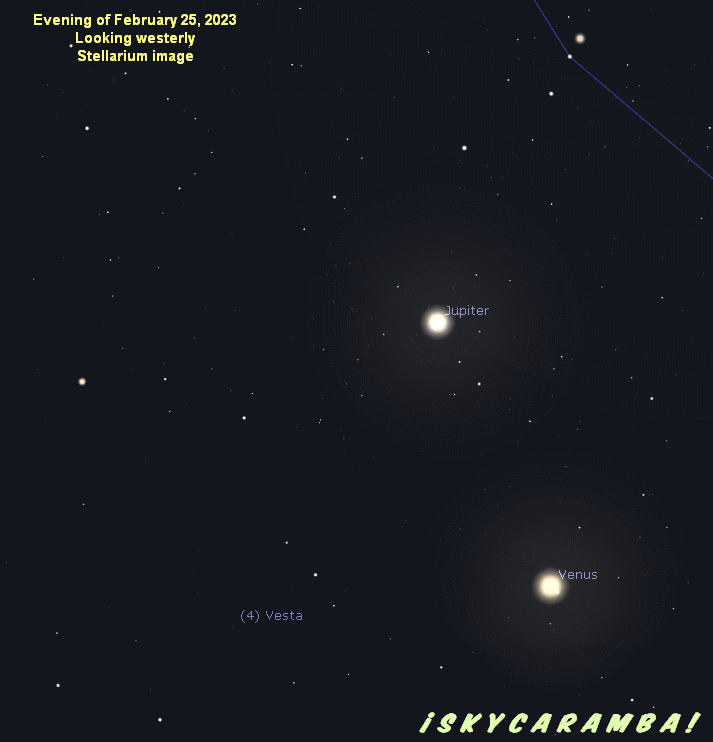For comet watchers, the most exciting thing this month is sure to be C/2022 E3 (ZTF). It will be closest to Earth on the 1st at approximately 12 hours UT at 42.47 million kilometers. That’s 26.39 million miles or 0.284 astronomical units. Comet brightness is notoriously hard to predict. It’s expected to be visible to the naked eye in dark enough skies.

On the 1st, ZTF will be about 71° north declination. So from 71° latitude it will pass directly overhead. That also means the comet’s so far north, it’s mainly a northern hemisphere object. On the 1st, it will touch the horizon from 19° south and stay below it from everywhere south of that latitude. From 19° north latitude and farther north, ZTF is circumpolar. In other words, it never sets. So if you’re farther north of that parallel, it’ll be in your sky all day and night on the 1st. Of course, it needs to be dark for you to see it. But the farther north you go, the more darkness you’ll have to look for it.
The comet’s long name tells you what kind of object it is, when it was discovered, and by whom. The letter C means it’s not expected to return, although some sources of astronomical news say it has an orbital period of 50,000 years. 2022 is the year of discovery. E3 means it was the third comet discovered during the first half of March that year. And ZTF stands for Zwicky Transient Facility, a Caltech observatory the discoverers used.

The comet is near the Big Dipper on the 1st. It moves fast. It’ll be near the bright star Capella in Auriga on the 5th. The next night, it’ll be near the star Saclateni. On the 8th, it’s near Hassaleh. Then it passes out of Auriga and by Mars on the 10th and 11th. It’s close to Aldebaran in the Hyades V on the 14th. As it continues crossing the sky, it will look like Orion is reaching out to the comet with his shield around the 21st. For the rest of the month, ZTF’s movement appears to be much slower. It seems to be on level with Orion’s waistline near the bottom of his shield on the 28th. The comet is expected to be much dimmer by that date. Perhaps it will require binoculars or a telescope to see.
Saturn is heading sunward, but maybe you can still see it setting in the evening not long after the sun when February begins. The best chance is from 15° to 20° north of the equator. If you can’t find the ringed planet on the first few evenings of the month, you’ll have to wait for it to become a morning object. Saturn’s conjunction is on the 16th to 17th. As Saturn disappears, Venus continues climbing above where it was across the constellation Aquarius. It’s on the way out of the constellation by the 10th.

You have a good chance to see and identify Neptune when Venus passes very close to it on the 15th. At their closest, they’ll be less than one minute of arc apart. Viewers from a swath across central Asia from Bangladesh and north-northwestward will see them at their closest. You won’t need magnification to see Venus, of course. Neptune will require it though. Binoculars will usually be enough, but a telescope will be better. And definitely view it from a dark sky. The usual warnings about obstructions on the horizon apply too. A hill, building, and distant clouds can block the view.
A thin, crescent moon comes up from below Venus on the 21st as Venus continues the climb toward Jupiter. The moon is next to Jupiter the next evening. Venus won’t be as close to Vesta on the 24th as it was to Neptune, but it’s another object you may find with binoculars. Venus and the asteroid come only as close as 4.6 degrees. That’s about nine full moon widths!

As the month ends, Venus is closing in on Jupiter. They have a close conjunction in March 1st. If your sky is dark enough, you can see the constellation Pisces, which Jupiter is alongside all month. Pegasus with its Great Square is right of it.
For another binocular challenge, look for Uranus near the head of Cetus the sea monster this month.
Mars is near the Hyades V moving eastward all month. It’s nicely placed between the Hyades asterism and the star Elnath at month’s end.
The moon starts the month in a waxing gibbous phase near the feet of Gemini. After passing near Pollux on the 3rd, the moon moves on to Cancer. The moon’s full on the 4th.
The moon is full on the 5th as it begins a journey through Leo. It moves through Virgo from the 9th to 13th. A last quarter moon is in Libra on the 13th and 14th. Then it’s on to Scorpius. Sagittarius is the moon’s home on the 16th and 17th. It’s a waning crescent visible closer to dawn by then.
After new moon on the 20th, you see a waxing crescent approaching our evening planets as explained above. The moon’s just past first quarter when it approaches Mars on the 27th.
Moon latitudes: Northern lunistice is on the 2nd at 27.5°. The moon goes south of the equator on the 9th. Southern lunistice is on the 16th at 27.6°. The moon goes north of the equator on the 22nd.
Moon distances: Apogee is on the 4th at 406,400 kilometers or 252,600 miles. Perigee is on the 19th at 358,300 kilometers or 222,600 miles.
Occultations: Viewers in southern South America may see the moon pass in front of Jupiter on the 22nd.
Mercury is at aphelion on the 15th. It’s 0.467 astronomical units from the sun. That’s 69.9 million kilometers or 43.4 million miles.
